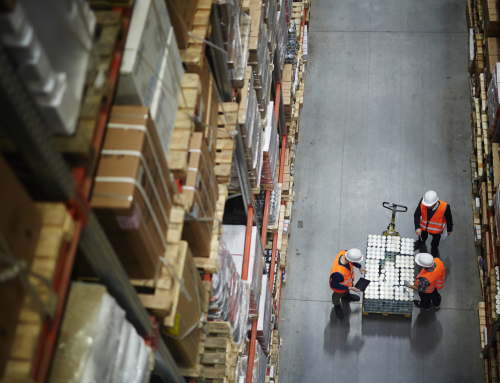For warehouse operators, here’s a tool to monetize underutilized warehouse space
Artificial intelligence. Machine learning. Real-time tracking. Cognitive computing. On-demand warehousing.
New software solutions have, in a relatively short time span, turned supply chains into growth engines. If the past was stable and predictable, the future is innovation-driven and responsive.
The explosion of e-commerce and consumer demand for speedy deliveries, increased emphasis on customization, and the ability to order practically anything online have fueled the need for warehouses to adapt — or risk being left behind by more forward-thinking competitors. Once characterized by predictable pallet-in-pallet-out operations, warehouses have had to evolve to master high-velocity, discrete picking tasks.
“Warehouses are changing because business is changing,” Matthew Butler, director of the industry strategies team at JDA, told Supply Chain Dive earlier this year.
Amid the challenges, however, lies opportunity.
On-demand warehousing emerged precisely to address one of the most challenging aspects of warehouse management in a time of rapid change — how to keep warehouse utilization high throughout the year.
In this new video, we explain how warehouse operators can leverage on-demand warehousing platform to transform unused warehouse space into revenue.
Creating a connection to maximize warehouse space
On-demand warehousing platforms did not take off simply for the benefit of retailers and start-ups searching for short-term contracts and seasonal warehouse storage. The whole concept is built on creating a connection between those who have space and services to offer — and those in need of exactly that. While operators have always tried to maximize warehouse space by altering floor plans, aisle widths, racking systems, and more, such changes do not deal with the underlying cause of low warehouse utilization: seasonality and unforeseen supply chain shocks.
In essence, on-demand warehousing adds agility to your warehouse operations, allowing you to quickly add or remove on-demand customers to increase warehouse utilization, while still meeting your promises to your long-term contract customers.
Unused space equals lost revenue
For all the talk about historically low warehouse vacancy rates, there is still a startling amount of untapped space in warehouses across the United States. And every square foot and rack that sits unused represents lost revenue. Just consider the actual numbers (sources: Warehowz, Legg Mason, JLL, and MWPVL)

Despite the actual availability of space, warehouses had — until the arrival of on-demand warehousing — no effective tool to reach a large pool of potential clients. But as the on-demand economy gained traction, turning individual homeowners and drivers into mini-business entities, the idea took hold in warehousing as well.
Getting started is as easy as creating an online account
So, what does on-demand warehousing look like put to practice from the perspective of a warehouse operator? Here’s a step-by-step guide to start maximizing warehouse space with the help of the Warehowz platform:
- Create an online account. It’s free and it will take no more than 5 minutes. Go to List Space and get started.
- Publish your listing. As soon as your listing is published, it becomes visible to clients on the platform. They will examine your capabilities and determine whether your warehouse fits their requirements. If there is a match, they will send a detailed project proposal.
- Review the project proposal. You are in charge. What is your pricing structure? Which project will you accept? It is all up to you.
- Accept a project. The time has come to do what you do best: provide warehouse services to your new client using your existing staff, facilities, software, and processes.
- Communicate with the client: Questions, downloads, billing, payments — the platform provides all the tools you need for swift exchanges. Only when you receive your first payment through the platform will Warehowz charge a small transaction fee. In other words, we only succeed when you do.
Do you have any questions for us? Don’t hesitate to get in touch or schedule a call with me.

Read more:



